Read a bit more about this condition

RED, credit Lorna Sim
When I was given the task to produce a health show for I woman Academy I thought I would be a little opportunistic as I was representing an Australian artist Liz Lea to tour her work RED, a one woman show based on her own story of living with the condition Endometriosis and the impact on her professional and personal life. But as I delved further and spoke with specialist Dr. Nicola Tempest who is researching the role of stem cells in diseases such as endometriosis and endometrial cancer, I realised thereis so much more to this condition.
I chatted to some women living with this condition: Liz Lea a Choreographer, Mandy Tickle a Digital Project Manager and Uma Ramanathan a Creative Practitioner and we talked about, how old they were when they were diagnosed, how it affects them and how are they coping. Their stories are all too familiar. After all they have gone through, all of them want to know:
When will there be a cure? What is the cause? Why is it taking so long to be diagnosed?
Endometriosis affects 1 in 10 women in the UK, that’s over 1.5 million women, 176 million worldwide! Awareness, support and information is needed to further understand this chronic condition.

As government in the UK begin to debate endometriosis in the workplace. This is timely and an opportunity for the Government to step up its efforts in ensuring people with endometriosis receive the necessary support to help people thrive in the workplace.
“I genuinely believe if this was a male problem a lot more would be done, if so many male working hours where taken out of the workplace and if so much pain was encountered my men I think more research, more resource, more thought and kindness would occur. So many women suffer from this condition and up to five years ago it was really a taboo subject” Mandy Tickle
What is Endometriosis?
Endometriosis (pronounced en- doh – mee – tree – oh – sis) is an Oestrogen dependent chronic inflammatory disease, relying on the bodies production of oestrogen and it affects just women.
“It’s where the lining of your womb (the Endometrium), is found outside of the womb” Dr. Nicola Tempest
It is a chronic and debilitating condition that causes painful or heavy periods. It may also lead to infertility, fatigue and bowel and bladder problems. Around 1.5 million women in the UK are currently living with the condition. Endometriosis can affect 1 in 10 women and girls of a childbearing age, regardless of race or ethnicity.
Many remain undiagnosed and are therefore not treated.

Credit: Endometriosis-uk.org
What occurs?
Every month a woman’s body goes through hormonal changes. Hormones are naturally released which cause the lining of the womb to increase in preparation for a fertilized egg. If pregnancy does not occur, this lining will break down and bleed – this is then released from the body as a period.
In endometriosis, cells like the ones in the lining of the womb grow elsewhere in the body. These cells react to the menstrual cycle each month and also bleed. However, there is no way for this blood to leave the body. This can cause inflammation, pain and the formation of scar tissue.
Endometriosis lesions can be found anywhere in the pelvic cavity:
On the ovaries
The fallopian tubes
On the pelvic side-wall (peritoneum)
The uterosacral ligaments,
The cul-de-sac,
The Pouch of Douglas
The rectal-vaginal septum
In addition, it can be found in:
Caesarian-section scars
Laparoscopy/ laparotomy scars
On the bowel
On the intestines, colon, appendix, and rectum
But these locations are not so common. In even more rare cases, endometriosis has been found inside the vagina, inside the bladder, on the skin, in the lung, spine, and brain.
What are the symptoms to be looking out for?

Photo by Sydney Sims on Unsplash
The classic endometriosis symptoms include:
Chronic pain
Painful, heavy, or irregular periods
Pain during or after sex
Infertility
Painful bowel movements
Fatigue
“It started off as its carried on throughout my life, I started to encounter pain before my period, quite severe and I thought it was my stomach or my back as that is how its experienced by me, pain down my legs, all sorts of pain everywhere, headaches, migraines and feeling sick and it built up gradually as I got older to sometimes I would pass out” Mandy Tickle
What is the impact?
“I have had to design my own career to fit round it, having spent so much time with HR departments asking me “why am I having so much time off!” So I try to work with companies and suggest I work from home where applicable. I have had to plan my career around my health which has been quite restrictive” Mandy Tickle
Endometriosis can have a significant impact on a woman’s life in a number of ways, including:
Depression/isolation
Lack of energy
Problems with a couple’s sex life/relationships
An inability to conceive
Difficulty in fulfilling work and social commitments
“I have reached the point at 49, I will be 50 soon that I need to take at least 2-3 days a month off, I can’t function, I can’t think, there is also a lot of nausea which comes as well, so three days a month, that’s a lot of time in a year you lose as productive living and working time” Liz Lea
How long does diagnosis take?
Because endometriosis manifests itself in a variety of ways and shares symptoms with other conditions, diagnosis can be difficult and often delayed. Recent research shows that there is now an average of 7.5 years between women first seeing a doctor about their symptoms and receiving a firm diagnosis.
Liz Lea was 40 when she discovered it and Uma Ramanthan was diagnosed at 35 years old through a laparoscopy, after encountering what felt like a large sized golf ball in her stomach. Mandy Tickle on the other hand was first diagnosed at 19 years but she encountered it much earlier at just 13!
How is it diagnosed?
“My GP told me I had IBS and I was not happy with that, so I had an appointment at Abacus, a NHS sexual health and family planning service, and I explained my symptoms to a female Dr. After offering an internal examination, she said I think you might have Endometriosis” Uma Ramanthan
The only definitive way to diagnose endometriosis is by a laparoscopy – an operation in which a camera (a laparoscope) is inserted into the pelvis via a small cut near the navel. The surgeon uses the camera to see the pelvic organs and look for any signs of endometriosis. If endometriosis is diagnosed, the endometriosis may be treated or removed for further examination during the laparoscopy.
“It was diagnosed as a ‘women’s problem’ and I was told it was the Working Women’s disease that I had!” Mandy Tickle
Stages of the disease
The stages don’t necessarily equate to pain and discomfort levels.
Stage 1, the endometriosis is considered “minimal.”
Stage 2, the endometriosis is considered “mild.”
Stage 3 is “moderate” endometriosis.
Stage 4 is the “severe” stage of endometriosis.
So although there are defined stages as Dr. Nicola Tempest says: “Endometriosis affects different people differently and to different extends, that’s why its really important to look at why people get this condition and the stage of disease does not correlate very well to the discomfort or the symptoms that people get which is quite a random thing to happen because usually the worse your condition get the worse your symptoms would be but that is not the case with endometriosis”

Photo by Vinicius Amano on Unsplash
Cure?
Currently, there is no cure for endometriosis. The different treatments available for endometriosis aim to reduce the severity of symptoms and improve the quality of life for a woman living with the condition. The type of treatment taken should be decided in partnership with a healthcare professional.
“The cure would be to remove the oestrogen as it’s an oestrogen dependent condition and to remove the oestrogen you would have to remove the ovaries, but on young women that would mean you were infertile, it would mean long term wise if you had children and wanted your ovaries removing because its causing endometriosis, we know ovaries by removing them decreases your lifespan, increase the chances of dementia, increase chances of bone fractures. It’s not a good thing to remove peoples’ ovaries in their 30s for example as we want people to have their ovaries til at least menopausal age” Dr. Nicola Tempest
What are the treatments available?

Credit Freestock
Treatment options available to women with endometriosis are:
• Surgery
• Hormone treatment
• Pain relief
As a treatment for endometriosis, surgery can be used to alleviate pain by removing the endometriosis, dividing adhesions or removing cysts. There are three options of surgery for treating endometriosis:
• Conservative surgery
• Complex surgery
• Radical surgery
Conservative surgery
Conservative surgery aims to remove or destroy the deposits of endometriosis and is usually done via a laparoscopy (keyhole surgery). The surgeon can either cut out the endometriosis (known as excision) or destroy it using heat or laser. Although surgery can provide relief from symptoms, they can recur in time.
“I asked was that the only solution and was told: Well you want to know what’s wrong right? So 10th June, I had the surgery. Before the surgery I had loads of issues where I thought it was IBS, certain foods I couldn’t it and it triggered indigestion, bloating and pain. Post surgery it was explained that certain other conditions can present with it and in my case it was IBS” Uma Ramanthan
Complex Surgery
“I had the disease cut out of me, but it has returned along with Adenomyosis”. Liz Lea
Depending on the severity of your endometriosis, you may need to undergo more complex surgery that involves different organs within the body, such as the bowel or the bladder. These types of surgery will often include a multi-disciplinary team such as a colorectal surgeon, and are usually carried out via laparoscopy. Any complex surgery should be discussed thoroughly with your doctor or specialist.
Radical surgery (Hysterectomy and or Oophorectomy)
“I was offered an hysterectomy but up until that point I had still been trying to have children” Mandy Tickle
Hysterectomy is the removal of the womb and is performed under general anesthetic. It can be done with or without removing the ovaries. If the ovaries are left in place then the chance of endometriosis returning is increased. Some women need a further operation to remove the ovaries at a later date. Hysterectomy is not the right operation for everyone and not a decision to make lightly. A hysterectomy is irreversible. Oophorectomy is the removal of the ovaries. When both ovaries are removed, a woman will experience an instant and irreversible menopause.
These procedures may be considered for a number of reasons. The decision to have either of these procedures is a big one to make – they are irreversible, so the advantages and disadvantages of each surgery should be discussed in full with your consultant.
“Having an hysterectomy alone won’t do anything to endometriosis as it’s the ovaries that are the problem. You need the ovaries removing and peritoneal strippings, all of the endometriosis removing. If you don’t remove all of the endometriosis at the time of removing the ovaries potentially if you have any oestrogen stimulants, so if you go on HRT or something like that the endometriosis even if you have no ovaries could regrow. It’s a drastic thing to happen and shouldn’t be taken lightly” Dr. Nicola tempest
Hormones
As endometriosis responds and grows when exposed to the female hormone oestrogen, a number of hormone treatments attempt to block or reduce the production of oestrogen in the body. This means the endometriosis will be unable to continue growing and will help to relieve symptoms. Hormone treatments for endometriosis either put the woman into an artificial pregnancy state or an artificial menopausal state. Both states are temporary and are reversed when the patient has stopped taking the hormones.
Pain Relief
“Every month there is a lot of bloating, a lot of pain, and if I didn’t take an awful lot of drugs, a lot of Nurofen, I literally would not be able to get out of bed, which sounds melodramatic but that is the reality. Its almost like living with a broken ankle!” Liz Lea
The main symptom of endometriosis is pelvic pain – there are various pain relief and pain management options available:
Heat and comfort
Painkillers
Physiotherapy
Pain modifiers
Pain clinics
Transcutaneous Electrical Nerve Stimulator (TENS) machines
“So for the last 13 years or so I have been on long term pain killers” Mandy Tickle
Facts and Figures
The latest facts and figures about endometriosis:
1 in 10 women of reproductive age in the UK suffer from endometriosis.
10% of women world wide have endometriosis – that’s 176 million worldwide.
The prevalence of endometriosis in women with infertility be as high as to 30–50%.
Endometriosis is the second most common gynaecological condition in the UK.
Endometriosis affects 1.5 million women, a similar number of women affected by diabetes.
On average it takes 7.5 years from onset of symptoms to get a diagnosis.
Endometriosis costs the UK economy £8.2bn a year in treatment, loss of work and healthcare costs. The cause of endometriosis is unknown and there is no definite cure.
Is it hereditary?
Some research suggests that endometriosis can be passed down to new generations through the genes of family members. Some families may be more susceptible to endometriosis but the causes of this are unclear.
Talking to Liz Lea she first discovered she had endometriosis at 40, her sister had it and told her at around 35 that she may also have it because it can be hereditary. By 40 it was in her bowel and she needed a bowel reconstruction.
Research

Photo by Ani Kolleshi on Unsplash
I met up with Dr. Nicola Tempest, an academic clinical lecturer at the Liverpool Women’s Hospital and I felt that she really did provide some answers to questions posed by the women I had spoken with.
The academic department at The Liverpool Women’s Hospital recruit people into research every time they come into hospital, have their own tissue bank with 1000’s of samples, have MRes, M.Phil and PHD all different students doing all sorts of research projects, very research active. Encourage people who visit the hospital to take part in research as trying to help people in the future.
Nicola explains that they are not sure of the pathogenesis of it and there are lots of theories such as Sampson’s theory of retrograde menstruation when basically you have a period you bleed back out and through your fallopian tubes, but 90% of women do this so why do only 10% of women have endometriosis? There is lots of research going on into the basic science of why people get it.
Involved in a number of different types of research Nicola, works as a clinical Doctor and researcher with a PHD looking into Endometriosis Stem Cells and the makeup of the Endometrium.
“It’s really important we do this basic science”. She is aware people want a cure and would like treatment, but the solution is just not there yet: she explains “We don’t know why as humans, there is only humans and primates that actually menstruate on a monthly basis, why do we do that? How is the endometrium made up so I have been doing 3 D models to see what it looks like and how to target the treatment options”
To conclude as I started, I asked Liz Lea what made her use her Endometriosis story as a creative process to make work and what can we expect when it tours UK in 2020?
“I started dreaming on the idea of making a work and RED was going to be all about my life, then working with my dramaturg we whittled the idea down to the Endometriosis experience…….RED deals with the mind set of being a performer and a dancer ignoring certain elements of health that don’t actually stop you from dancing…. Living with a bowel reconstruction!…….. We have just tried to make it funny and as humorous as we possible can. There are a couple of gut punches in there as well. Its very OTT, beautiful film and great variety of music and choreographers”
Huge thanks to all of my contributors, to Dr Nicola Tempest for providing a real insight to the condition and the research that is taking place; to Liz, Mandy and Uma for sharing their stories I found it really informative, engaging and inspiring.
Lets hope through the research we can at some point find a cure.
Links
www.endometriosis-uk.org
www.endometriosis.org
www.health.com/sexual-health/endometriosis-stages
vimeo.com/204862527
#dance #endometriosis
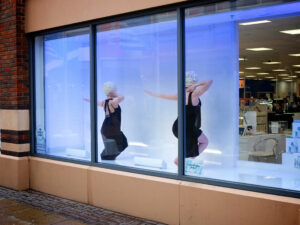


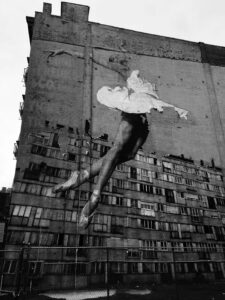
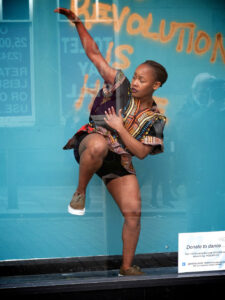




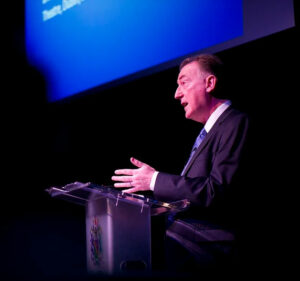 Victor Merriman is Professor of Critical Studies in Drama at Edge Hill University. He is Director of the Performance and Civic Futures Research Group (2013-), and a founder director of One Hour Theatre Company (2016-). He publishes on Irish theatre, postcolonial criticism, public policy, pedagogy, and cultural theory. He has published two monographs, Because We Are Poor: Irish Theatre in the 1990s (Carysfort Press, 2011), and Austerity and the Public Role of Drama: Performing Lives-in-Common (Palgrave Macmillan, 2019). He has edited special issues of the on-line journal Kritika Kultura (
Victor Merriman is Professor of Critical Studies in Drama at Edge Hill University. He is Director of the Performance and Civic Futures Research Group (2013-), and a founder director of One Hour Theatre Company (2016-). He publishes on Irish theatre, postcolonial criticism, public policy, pedagogy, and cultural theory. He has published two monographs, Because We Are Poor: Irish Theatre in the 1990s (Carysfort Press, 2011), and Austerity and the Public Role of Drama: Performing Lives-in-Common (Palgrave Macmillan, 2019). He has edited special issues of the on-line journal Kritika Kultura ( Alexandrina has recently founded her own organisation Yewande 103. Yewande 103 formalises the past 10+ years of Creative Director Alexandrina Hemsley’s work in the contemporary dance field as a choreographer, performer, writer, mentor and educator.
Alexandrina has recently founded her own organisation Yewande 103. Yewande 103 formalises the past 10+ years of Creative Director Alexandrina Hemsley’s work in the contemporary dance field as a choreographer, performer, writer, mentor and educator. A practitioner, academic and researcher interested in creating work that can help us to think through new historical discontinuities that have emerged in post-capitalist and post-socialist transition. This is ever more relevant at a time when the Eurozone is fragmenting, and right wing populisms are on the rise. In addition, A researcher, she writes extensively on the issues of belonging, female body and the border and intergenerational trauma. Her artistic work explores borders and stories that emerge from living in transition. Ultimately, she is interested in creating and researching work that provides means by which people can meet, human to human, in all their differences, in the most sensitive and sincere way possible.
A practitioner, academic and researcher interested in creating work that can help us to think through new historical discontinuities that have emerged in post-capitalist and post-socialist transition. This is ever more relevant at a time when the Eurozone is fragmenting, and right wing populisms are on the rise. In addition, A researcher, she writes extensively on the issues of belonging, female body and the border and intergenerational trauma. Her artistic work explores borders and stories that emerge from living in transition. Ultimately, she is interested in creating and researching work that provides means by which people can meet, human to human, in all their differences, in the most sensitive and sincere way possible. Dylan Quinn and has been working as a Choreographer, Dance Artist, performer and facilitator for over 26 years. In 2009 he established Dylan Quinn Dance Theatre (DQDT) and has operated as Artistic Director for the last 11 years. Dylan has created numerous company performances and commissioned works for a range of dance and theatre companies and was Irish Times Theatre Award Nominee 2018. Dylan’s work has been presented nationally and internationally across Europe and the US.
Dylan Quinn and has been working as a Choreographer, Dance Artist, performer and facilitator for over 26 years. In 2009 he established Dylan Quinn Dance Theatre (DQDT) and has operated as Artistic Director for the last 11 years. Dylan has created numerous company performances and commissioned works for a range of dance and theatre companies and was Irish Times Theatre Award Nominee 2018. Dylan’s work has been presented nationally and internationally across Europe and the US. Choreographer, dancer, and scholar Thomas F. DeFrantz has a joint appointment as Professor in the dance program and African and African American Studies department at Duke University. His first book, entitled Dancing Many Drums: Excavations in African American Dance for the SDHS series Studies in Dance History, won the Erroll Hill Award for Research in Black Theater. His second book was the riveting Revelations: Alvin Ailey’s Embodiment of African American Culture, and his widely cited articles and essays on the black body in dance constitute some of the most exciting work in the area today. He served as archivist for the Alvin Ailey American Dance Theater, and organized the dance history program at the Ailey school for many years. Creatively, he has created music for the Dance Theatre of Harlem, choreographed the play for young people Paul Robeson, All-American, written by Ossie Davis, and collaborated with Ballet Hispanico on Border Crossings. For years he was also active with the Theater Offensive of Boston, who produced his original musical play, Queer Theory: An Academic Travesty. The intersection of academic work and dance practice also manifests itself in his role as founder and artistic director of artistic director of SLIPPAGE: Performance|Culture|Technology. DeFrantz is a founding member of the Collegium for African Diaspora Dance.
Choreographer, dancer, and scholar Thomas F. DeFrantz has a joint appointment as Professor in the dance program and African and African American Studies department at Duke University. His first book, entitled Dancing Many Drums: Excavations in African American Dance for the SDHS series Studies in Dance History, won the Erroll Hill Award for Research in Black Theater. His second book was the riveting Revelations: Alvin Ailey’s Embodiment of African American Culture, and his widely cited articles and essays on the black body in dance constitute some of the most exciting work in the area today. He served as archivist for the Alvin Ailey American Dance Theater, and organized the dance history program at the Ailey school for many years. Creatively, he has created music for the Dance Theatre of Harlem, choreographed the play for young people Paul Robeson, All-American, written by Ossie Davis, and collaborated with Ballet Hispanico on Border Crossings. For years he was also active with the Theater Offensive of Boston, who produced his original musical play, Queer Theory: An Academic Travesty. The intersection of academic work and dance practice also manifests itself in his role as founder and artistic director of artistic director of SLIPPAGE: Performance|Culture|Technology. DeFrantz is a founding member of the Collegium for African Diaspora Dance. After studying at London Contemporary Dance School, Sharon graduated from the BPA (Hons) in Contemporary Dance at NSCD in 1997.
After studying at London Contemporary Dance School, Sharon graduated from the BPA (Hons) in Contemporary Dance at NSCD in 1997.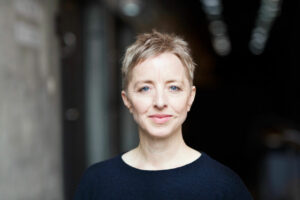 Dana Caspersen has an MS in Conflict Studies and Mediation, an MFA in Dance and has received several international awards for creative achievement. Her book Changing the Conversation: The 17 Principles of Conflict Resolution has been translated into 8 languages and is widely used as a training tool by organizations, schools and individuals worldwide. In her work integrating conflict engagement strategies with choreographic methodologies, she has designed numerous large-scale public dialogue models addressing topics such as immigration, racism and violence, bringing together thousands of people from diverse communities across the world– from a refugee camp in Berlin to Lincoln Center’s Global Exchange conference in New York City.
Dana Caspersen has an MS in Conflict Studies and Mediation, an MFA in Dance and has received several international awards for creative achievement. Her book Changing the Conversation: The 17 Principles of Conflict Resolution has been translated into 8 languages and is widely used as a training tool by organizations, schools and individuals worldwide. In her work integrating conflict engagement strategies with choreographic methodologies, she has designed numerous large-scale public dialogue models addressing topics such as immigration, racism and violence, bringing together thousands of people from diverse communities across the world– from a refugee camp in Berlin to Lincoln Center’s Global Exchange conference in New York City. On graduating from Elmhurst Ballet School in 1989, Michelle developed her professional career in Madrid, Spain, establishing her own company in 1996 ‘Michelle Man & Friends’ collaborating extensively with composers, architects, lighting designers, musicians, costume makers, choirs, circus artists and multi-media artists. Her work has been received in Brazil, Chile, Korea, Italy, France, Germany, Canada, Sweden, Spain as well as the UK. She has been commissioned by the Spanish Government, CDN (Spanish National Theatre), Teatro Real, Teatro Circo Price, and has been awarded funding for research and artistic production. Michelle continues to choreograph internationally across a diverse range of contexts and disciplines that include contemporary dance, circus, theatre and music performance. She holds a Masters in Making Performance (awarded Distinction) and is currently a PhD Researcher in Dance at the University of Surrey, under the supervision of Dr Rachel Hann and Dr Adam Alston with the working title ‘Light and the Choreographic’. Michelle is SL in Dance at Edge Hill University
On graduating from Elmhurst Ballet School in 1989, Michelle developed her professional career in Madrid, Spain, establishing her own company in 1996 ‘Michelle Man & Friends’ collaborating extensively with composers, architects, lighting designers, musicians, costume makers, choirs, circus artists and multi-media artists. Her work has been received in Brazil, Chile, Korea, Italy, France, Germany, Canada, Sweden, Spain as well as the UK. She has been commissioned by the Spanish Government, CDN (Spanish National Theatre), Teatro Real, Teatro Circo Price, and has been awarded funding for research and artistic production. Michelle continues to choreograph internationally across a diverse range of contexts and disciplines that include contemporary dance, circus, theatre and music performance. She holds a Masters in Making Performance (awarded Distinction) and is currently a PhD Researcher in Dance at the University of Surrey, under the supervision of Dr Rachel Hann and Dr Adam Alston with the working title ‘Light and the Choreographic’. Michelle is SL in Dance at Edge Hill University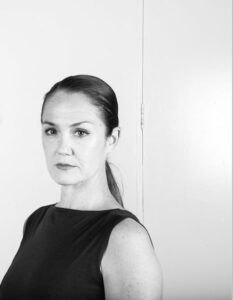 Liz is based in Canberra after 20 years in Europe, touring internationally. Liz’s speciality is working with classical Indian dance and martial arts. She has worked with Ranjabati Sircar, Mavin Khoo, the Royal Opera House and English Bach Festival. She has been commissioned in India, UK, Australia, South Africa, Singapore and USA.
Liz is based in Canberra after 20 years in Europe, touring internationally. Liz’s speciality is working with classical Indian dance and martial arts. She has worked with Ranjabati Sircar, Mavin Khoo, the Royal Opera House and English Bach Festival. She has been commissioned in India, UK, Australia, South Africa, Singapore and USA. Wendy Houstoun is a movement/theatre artist who remains committed to finding new forms to address her themes. Over the years, her work has developed a uniquely distinctive style that combines movement with text, and meaning with humour.
Wendy Houstoun is a movement/theatre artist who remains committed to finding new forms to address her themes. Over the years, her work has developed a uniquely distinctive style that combines movement with text, and meaning with humour. Born in Liverpool, Karen Gallagher trained at the Laban Centre for Movement and Dance in London in the early 80s then returned to Liverpool to develop dance in a variety of ways. Artistic Director of MDI (1994-2018) Karen is passionate about dance and how it can effect change in people’s lives alongside how as an Artform it is appreciated through creation and performance
Born in Liverpool, Karen Gallagher trained at the Laban Centre for Movement and Dance in London in the early 80s then returned to Liverpool to develop dance in a variety of ways. Artistic Director of MDI (1994-2018) Karen is passionate about dance and how it can effect change in people’s lives alongside how as an Artform it is appreciated through creation and performance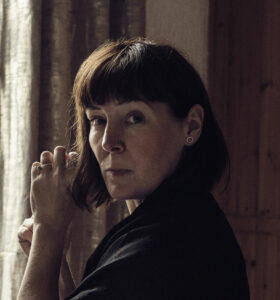 Dance artist/scholar Sarah Black-Frizell joined Liverpool Hope University as a lecturer in dance, specialising in situated dance and installation practices, maternal and feminist ethics in performance, choreographic methodologies and teaching Contemporary Limon Technique. Sarah studied for her undergraduate degree at Middlesex University, MA at Liverpool John Moores and her doctorate at Middlesex University. Sarah trained and performed at the Limon Institute in New York.
Dance artist/scholar Sarah Black-Frizell joined Liverpool Hope University as a lecturer in dance, specialising in situated dance and installation practices, maternal and feminist ethics in performance, choreographic methodologies and teaching Contemporary Limon Technique. Sarah studied for her undergraduate degree at Middlesex University, MA at Liverpool John Moores and her doctorate at Middlesex University. Sarah trained and performed at the Limon Institute in New York.













